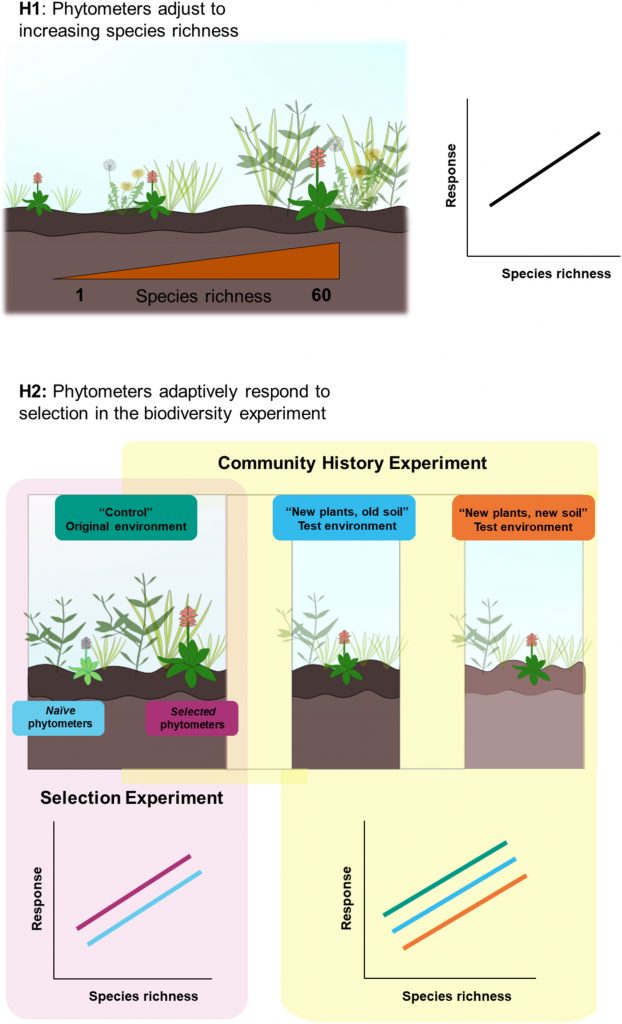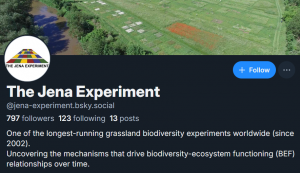New publication from De Giorgi et al. in Ecology and Evolution: Selection and Phenotypic Plasticity Shape Plant Performance in a Grassland Biodiversity Experiment
The increasing strength of positive biodiversity effects on plant community productivity, observed in long-term biodiversity experiments, relates to mixed responses at the species level. However, it is still not well understood if the observed mixed responses are adaptations to the different selection pressures in plant communities of different diversity or plastic adjustments. We conducted a transplant experiment for nine plant species in a 17-year-old biodiversity experiment (Jena Experiment). We used offspring of plants selected in the biodiversity experiment and from plants without selection in the experiment (naïve). In a Community History Experiment, offspring of selected plants were planted in three test environments: their original plant communities with old soil (of the long-term Jena Experiment), newly assembled plant communities with old soil, and newly assembled plant communities with new soil. In a Selection Experiment, we compared selected plants with naïve plants, both grown in the selected plants’ original environment. In all test environments, increasing species richness was associated with a decrease in plant individual biomass, reproductive output, relative growth rate, plant height, leaf greenness, and leaf nitrogen concentration, and an increase in specific leaf area (SLA). In the Selection Experiment, selected plants had a weaker decline in biomass, taller stature, and higher leaf carbon and nitrogen concentrations than naïve plants with increasing species richness. In the Community History Experiment, survival was lower, while plant height, SLA, leaf nitrogen, and carbon concentrations were highest in the test environment with new plants and soil. However, in high-diversity communities, individuals produced more biomass, grew taller, and had higher leaf greenness in their original environment. Overall, we found that, despite the crucial role of phenotypic plasticity for trait adjustments to the actual environment, selection in the biodiversity experiment produced adaptive phenotypic responses, largely explained by plant community history and positive plant–soil feedbacks established over time.

Reference:
De Giorgi, F., W. Durka, Y. Huang, B. Schmid, and C. Roscher. 2025. Selection and phenotypic plasticity shape plant performance in a grassland biodiversity experiment. Ecology and Evolution 15:e71117. https://doi.org/10.1002/ece3.71117.



